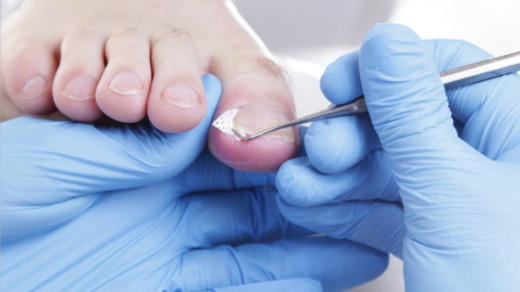How Ingrown Toenail Treatment Can Help You Get Back on Your Feet Quickly
Ingrown toenails are a common yet painful condition that can make even the simplest tasks, like walking or standing, incredibly uncomfortable. This occurs when the edge of a toenail grows into the surrounding skin, causing redness, swelling, and sometimes infection. Whether caused by improper footwear, nail trauma, or genetic factors, ingrown toenails can significantly affect your mobility. However, with the right ingrown toenail treatment, you can quickly alleviate discomfort and return to your regular activities without prolonged interruption.
Understanding Ingrown Toenails
An ingrown toenail develops when the nail grows into the skin, often on the big toe, and causes irritation. Symptoms can vary but generally include pain, swelling, redness, and in some cases, pus if an infection has occurred. It is essential to address the condition early to prevent further complications, such as chronic pain or infection that might require more invasive procedures.
Effective Ingrown Toenails Treatment: Solutions for Quick Relief
The treatment for ingrown toenails depends on the severity of the condition. In the early stages, simple at-home remedies can provide relief, but if the ingrown toenail has become more severe or infected, professional medical treatment is recommended. Let’s explore some common treatment options.
1. Home Remedies for Mild Cases
If caught early, ingrown toenails can often be treated at home with basic measures. Soaking the foot in warm water for 15-20 minutes a few times a day can help reduce swelling and pain. Using antiseptic creams or ointments can prevent infection, while gently lifting the nail with a cotton ball or dental floss may help alleviate the pressure on the skin. However, these methods should be used with caution and if the condition doesn’t improve, it’s crucial to seek professional care.
2. Medical Treatments for Persistent Ingrown Toenails
If at-home treatments do not resolve the issue, medical intervention may be necessary. A healthcare provider might recommend a simple procedure where the edge of the toenail is cut or removed to allow the nail to grow properly. This is often a quick and effective solution to relieve pain and prevent recurrence.
3. Partial Nail Removal for Severe Cases
In more severe cases, a podiatrist might need to perform a partial nail removal. This procedure involves removing part of the toenail and addressing the underlying issue, such as improper nail growth or an infection. This treatment is highly effective, especially for recurring ingrown toenails, and can offer long-term relief.
4. Permanent Nail Removal (for Chronic Cases)
For chronic or recurrent ingrown toenails, permanent nail removal may be necessary. This involves removing the nail completely, which allows the area to heal and prevents the ingrown condition from returning. Although this is a more invasive procedure, it provides a long-term solution for those who experience frequent ingrown toenails.
Benefits of Timely Ingrown Toenail Treatment
When left untreated, ingrown toenails can lead to more significant health issues, including infections, permanent nail damage, and even difficulty walking. By seeking timely ingrown toenails treatment, you can experience the following benefits:
1. Reduced Pain and Discomfort
Addressing the problem early can help relieve pain and prevent it from escalating. Proper treatment will alleviate the pressure on the affected toe, allowing you to walk and stand more comfortably.
2. Prevention of Infection
Ingrown toenails can lead to infections if bacteria enter the damaged skin. Early treatment ensures that the condition doesn’t worsen, reducing the risk of infection and the need for more complex medical interventions.
3. Faster Recovery
With proper care, most individuals can expect to return to their daily activities quickly after treatment. Early intervention and professional care contribute to faster healing times, allowing you to get back on your feet in no time.
When to Seek Professional Help
If you notice signs of infection, such as increased redness, swelling, or pus, it’s important to consult a healthcare provider immediately. Additionally, individuals with diabetes or poor circulation should seek medical attention at the first sign of an ingrown toenail, as these conditions can complicate healing.
Conclusion
Ingrown toenails, though painful, are treatable with the right approach. Whether you’re experiencing a mild case that can be managed at home or dealing with a more severe condition that requires medical intervention, timely treatment is crucial. By addressing the issue early, you can alleviate pain, prevent infection, and get back on your feet quickly, returning to your normal activities with minimal disruption. If you’re dealing with an ingrown toenail, don’t wait—seek the appropriate treatment and start your recovery today.

